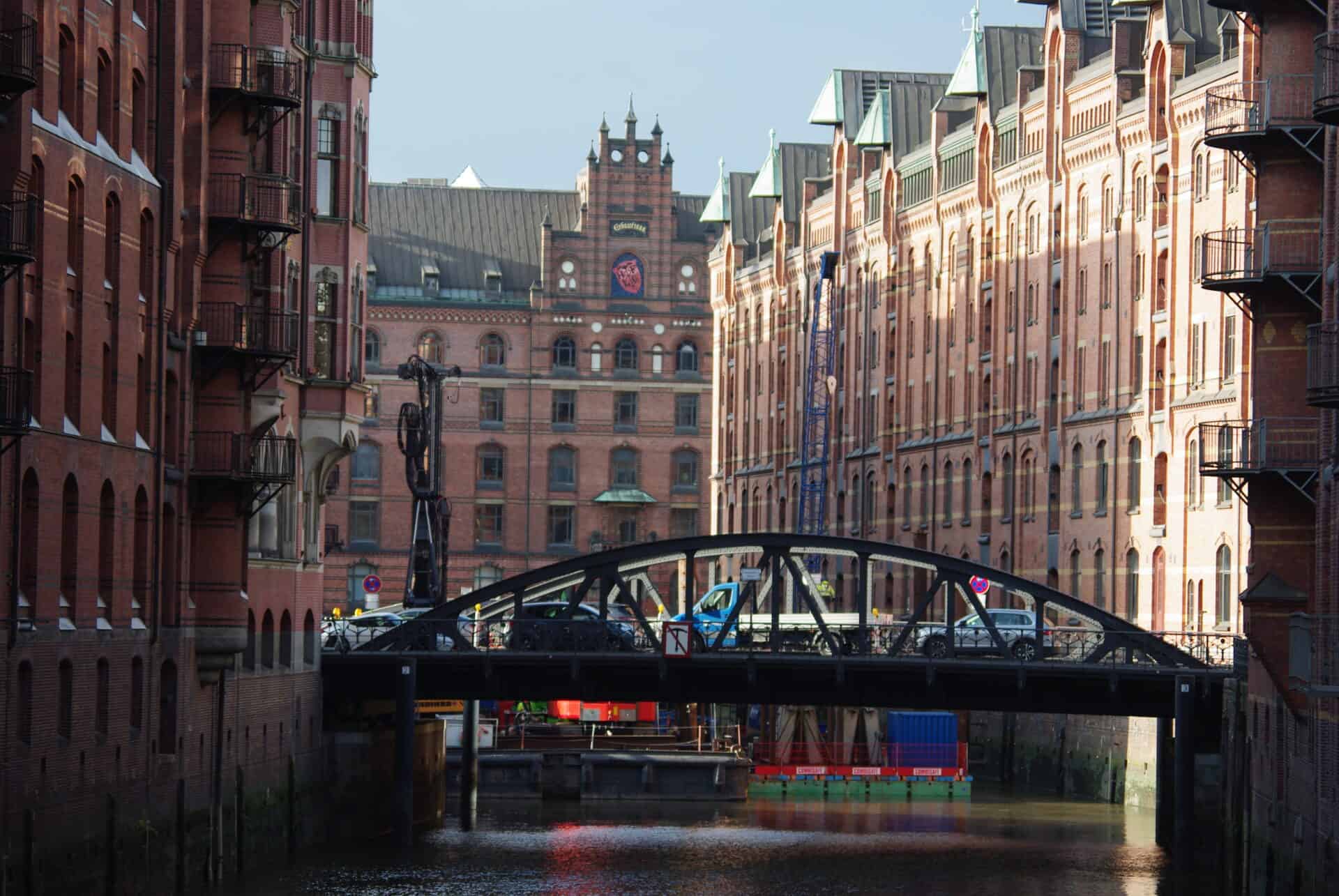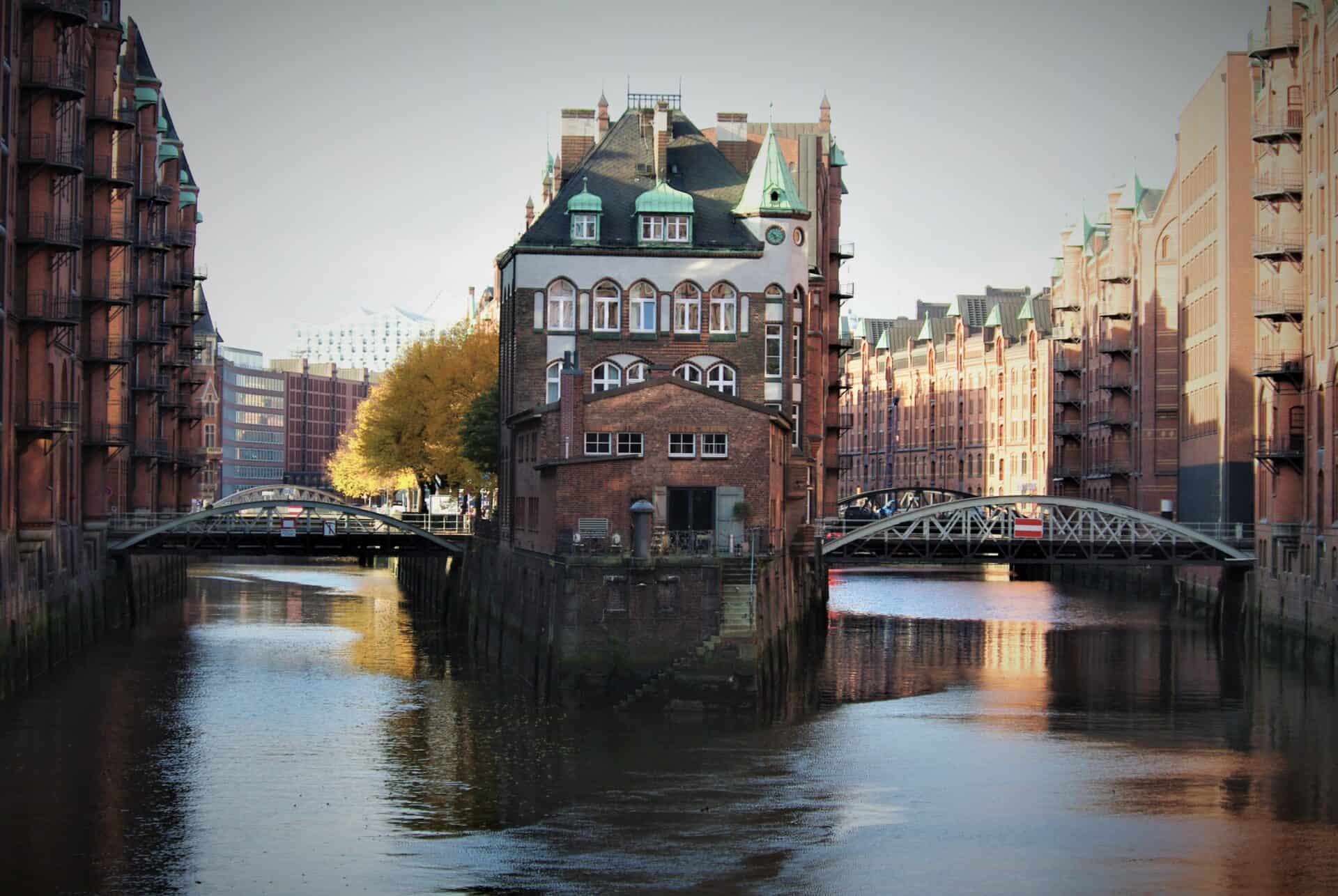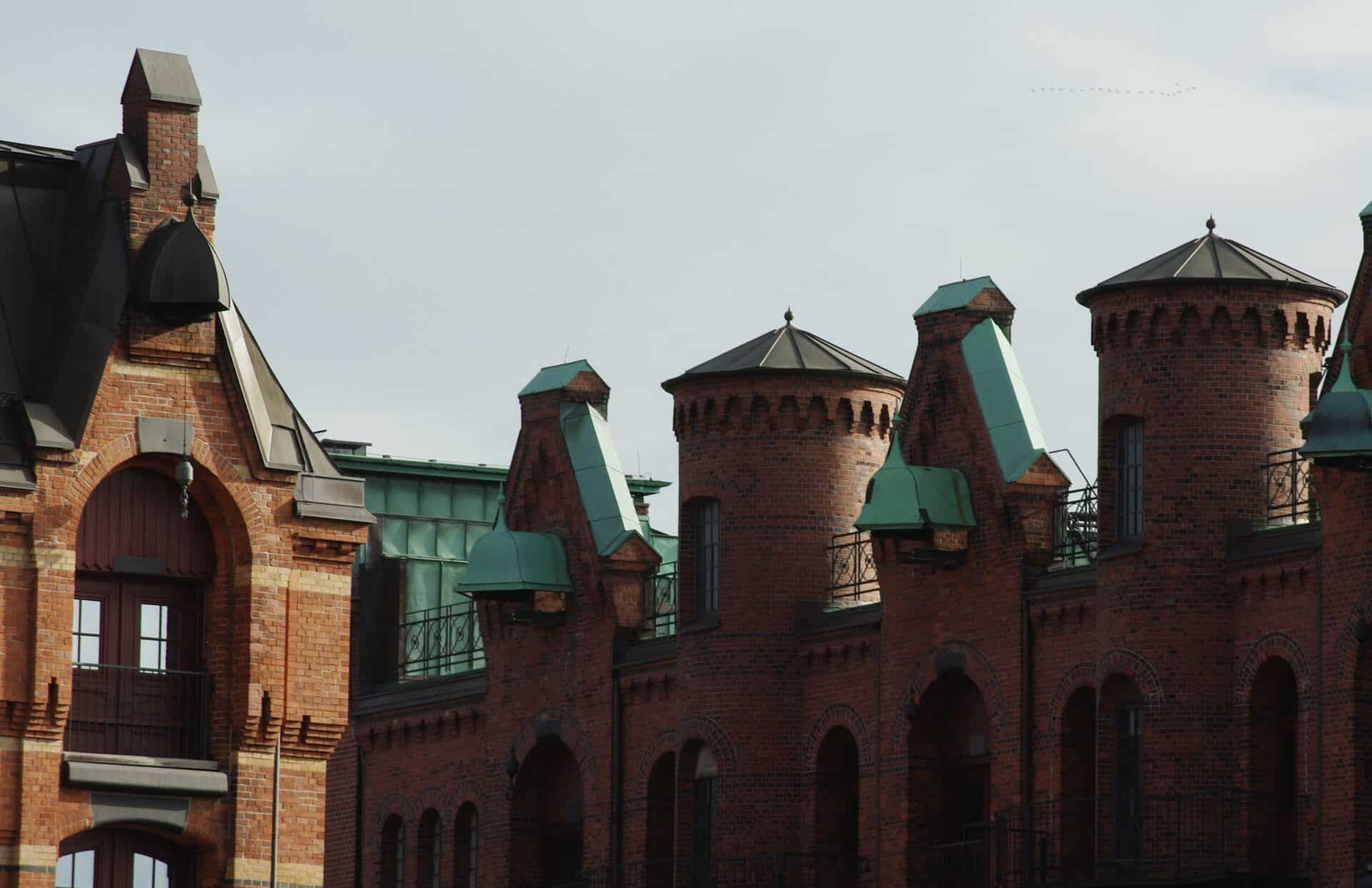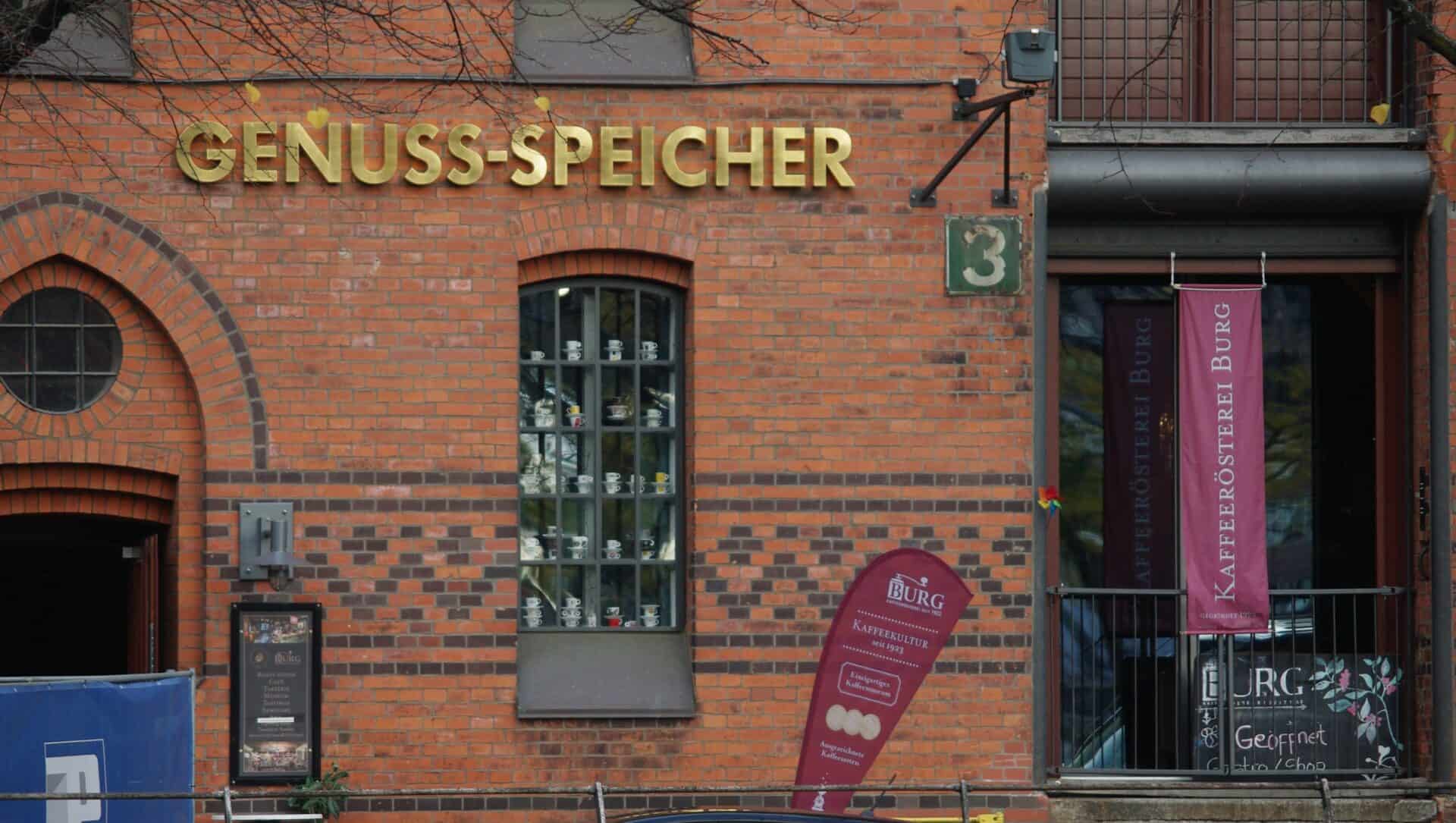Tour of the Speicherstadt
![]()
A tour of the Warehouse district with the Hamburg Greeters is not a conventional Warehouse district (Speicherstadt) tour but a walk with a local resident through a uniquely different world. If you think away the cars, you are on a time travel to the year 1888, when the largest part of the warehouses, that is, the warehouses, were completed.
The Warehouse district is a symphony of red brick. Simply “red” would be wrong, however: each individual warehouse block has a slightly different coloring and ornamentation. Even today, the Warehouse district is the largest contiguous warehouse complex in the world. In the past, spices, tobacco, tea, coffee, cocoa, carpets and many other non-perishable goods were stored here.
Through economic change, this has changed. Other traders and service providers have now moved in, such as textile retailers, advertising agencies, photographers and IT companies. Applicants* for renting warehouse floors continue to queue up. HHLA, the landlord (Hamburger Hafen- und Logistik AG, 70% state-owned) ensures a good mix of industries. This is another reason why life has returned to the “red city.”
The famous miniature wonderland can be found here, but also numerous museums, the Hamburg Dungeon, Dialogue in the Dark, quite a few restaurants and the “water castle”. Of course there are also some classic warehouse floors. Besides some tea merchants there are more than 50 carpet dealers with mostly old-established Iranian company owners. After Iran, the Warehouse district is home to the largest storage area for oriental carpets in the world. Carpet dealers from all over the world come to Hamburg to buy oriental carpets.
Maritime tour among friends
Warehouse district construction
The area of today’s Warehouse district was already located within the Hamburg city walls on the islands Wandrahm, Brook and Kehrwieder since the Thirty Years’ War. Around 1880, 20,000 people lived in this quarter, which was closely built with half-timbered houses.
Hamburg remained a customs-free territory even after the founding of the German Empire in 1871. Imperial Chancellor Bismarck urged Hamburg to join the customs union: in return, Hamburg was granted a free port. The merchants wanted to store their goods close to the city center, so it was decided to demolish the houses on the three islands. The construction of the Warehouse district is thus linked to a social atrocity: the 20,000 residents were displaced without direct replacement housing. The poorer residents were housed in the “Gängeviertel” (corridor districts) of the Old and New Towns. Today, these neighborhoods would be called social hot spots. In 1892, the cholera epidemic broke out there due to unacceptable hygienic conditions.
The water castle
The moated castle in the street Dienerreihe is “only” the name of a restaurant in the former winch keeper’s house. Noblemen were not allowed to acquire real estate in Hamburg for centuries. Thus, there are no castles or palaces in Hamburg. Nevertheless, very clever people are right when they mention the Bergedorf Castle: But that was only the official residence of a non-noble bailiff who administered the district. For many centuries, Hamburg was a purely “citizens'” republic. For a long time, however, only wealthy men, mostly merchants, were allowed to have a say. The “common” people mocked the rich merchants as “Pfeffersäcke” (pepper sacks).
From the winch keepers’ house, the winch keepers were able to move out quickly when the winches on the stores needed repair. The building is located in an exposed position at the confluence of two Fleete and is one of the most photographed buildings in the city. In addition to the restaurant, the same building houses a tea store worth seeing, the Teekontor. Even if you’re not a tea drinker*, it’s a treat to smell the lids of the tea glasses.
By the way, the Teekontor is one of the filming locations for the popular children’s and youth television series “Die Pfefferkörner”.
Modern architecture 130 years ago
The warehouses were built according to the logistics requirements of the time. On one side there was water, on the other side, land. Goods were delivered with barges (engine-less open boats) using the “Fleete” (canals) and hoisted into the floors by means of winches. The barges were either pulled by a tugboat or moved by the crew with peek hooks and muscle power. For this purpose, metal hooks were embedded in the walls of the warehouses, at three different heights because of the tides. These hooks still exist today.
On the land side there are also winches. From there, the goods were transported away by horse-drawn carts, railroads or trucks. The warehouses were built without heating. Due to the thick walls, the temperature remains at 12 to 17 degrees. There was also a centralized electricity supply, and the approximately 1000 winches were powered by centrally generated hydraulics. Many of these winches still work, now with electricity. Especially the carpet dealers still use the winch system.
Coffee trade in the Warehouse district
The history of the Warehouse district is closely linked to the coffee trade. In the Genuss-Speicher at St. Annenufer 2 you will find the coffee roaster Burg. It’s worth a visit: you can watch coffee being roasted, smell 70 different types of coffee from the 70 countries where coffee is grown, and get to know an original warehouse from the inside. There is also a cafeteria that invites you to linger. Those who want to learn quite a bit about coffee can visit the coffee museum located in the basement.
Quite close to the Genuss-Speicher is the former stock exchange hall of the Hamburg Coffee Exchange. It is a post-war building. Large parts of the Warehouse district were destroyed during the war, but much has been rebuilt true to the original or slightly modified.
With a little luck, the stock exchange hall can also be visited, but is often used as an event room of a hotel. The hall and a large glass painting are listed. The glass picture shows coffee picker women in Costa Rica and is a gift of the state of Costa Rica to Hamburg.
The very brave venture from the Börsensaal across a kind of “Bridge of Sighs” over Brooksfleet into the Hotel Ameron. The hotel is located in the former house of coffee traders. From here, you can take a short hop into Hafencity to follow in the footsteps of the coffee trade. Go to Sandtorpark and the Coffeeplaza there. The Neumann Group, the world’s largest coffee importer, resides in the round high-rise building. It owns the world’s largest (“artificial”) coffee bean, which stands in the plaza.
After two to three hours our Warehouse district guided tour of a different kind ends.
All about "Greets"
- Duration: two to three hours and absolutely free
- Max. 6 people, no combination of different requests
- Meeting point and exact route: by agreement between guest and Greeter
- Request: please at least two weeks before desired date
- More about Greets




